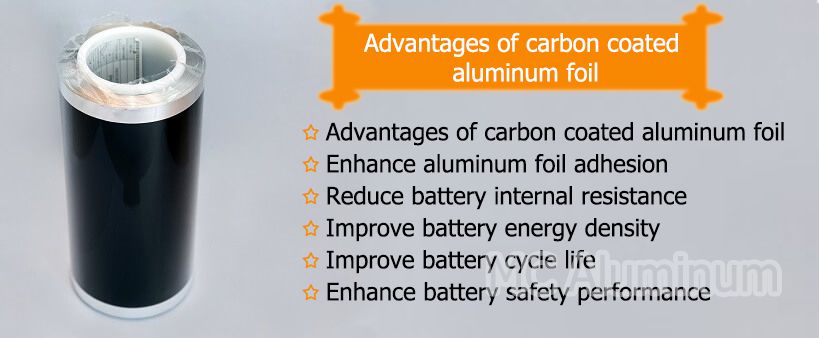Carbon-coated aluminum foil refers to a composite foil material with a thickness of 1 μm, which is made of aluminum foil as the base and coated with adhesive and conductive materials on the aluminum current collector. Carbon-coated aluminum foil has the functions of enhancing coating bonding strength, reducing battery impedance, extending battery cycle life, and protecting current collectors. It is an important substrate for lithium batteries and is widely used in supercapacitors, power batteries, energy storage batteries and other fields.
Carbon coated aluminum foil specifications
| Alloy | 1060, 1070, 1080, 1100, 1235t, 1235t3 |
| Aluminum Foil Substrate Thickness | 16µm |
| Coating | Carbon Black, Graphite Flakes, Graphene |
| Coating Thickness | 1 Μm On One Side/2*1 Μm On Both Sides |
| Total Thickness | 18µm |
| Aluminum Foil Width | 260mm |
| Coating Width | 230mm |
| Coating Type | Aqueous Solvent |
| Coated Surface | One Side Or Both Sides |
| Density | 0.5-2.0g/M2 |
| Surface Conductivity | <30ω/25µm2 |
| Length | 80-90m |
| Weight | 1kg/Roll |
| Width | 200-1600mm |

Carbon coated aluminum foil performance:
1. Helps suppress battery polarization and improve rate performance
2. Can reduce battery internal resistance
3. Improve battery consistency and extend battery cycle life
4. Enhance adhesion and reduce manufacturing costs
5. Carbon-coated aluminum foil prevents corrosion of current collector and extends service life
6. Improve material processing performance, such as lithium iron phosphate and lithium titanate
